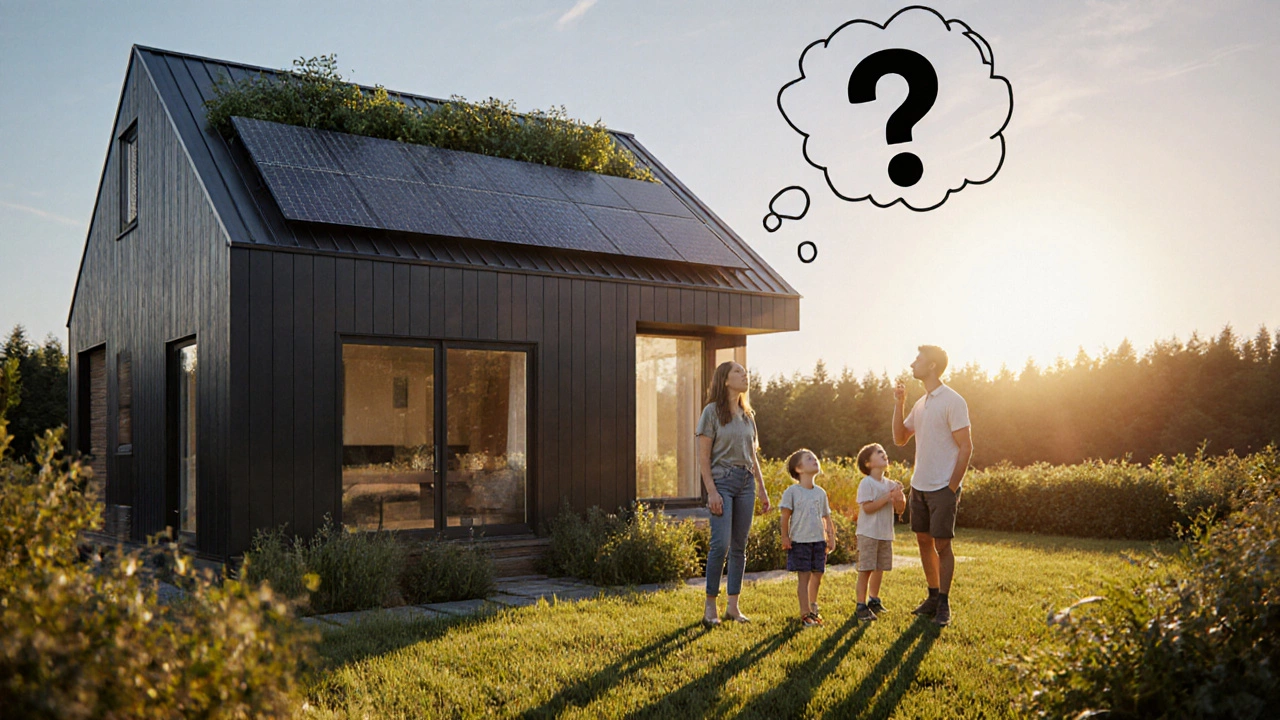Affordable Green Housing – Budget‑Friendly Sustainable Living
When talking about affordable green housing, low‑cost homes built to minimize environmental impact, also known as budget sustainable housing, it’s helpful to see how it connects with related concepts. An eco‑friendly house, a dwelling that uses resources efficiently and reduces waste is a core subtype. A green building, any construction that follows sustainability standards provides the framework, while sustainable materials, low‑embodied‑carbon products such as reclaimed timber or hempcrete give the project its eco‑edge. Together these pieces form the base for a wallet‑friendly, earth‑friendly home.
One of the biggest myths is that going green always means splurging. In reality, affordable green housing often saves money in the long run because it cuts energy bills and maintenance costs. For example, passive solar design—orienting windows to capture winter sun and adding proper shading for summer—can slash heating expenses by up to 30%. Pair that with a small renewable energy system, like a rooftop solar panel kit, and you’re looking at a rapid pay‑back period. The key is to focus on high‑impact, low‑cost measures first.
Choosing the right sustainable material, such as insulated concrete forms or locally sourced stone can dramatically lower both upfront and lifecycle costs. Materials with low embodied carbon not only reduce the home’s carbon footprint but often require less transportation and handling, shaving off a chunk of the budget. Reclaimed bricks, salvaged doors, and recycled insulation are practical finds at local salvage yards or online marketplaces, and they add character without the price tag of new, brand‑name products.
Another practical angle is the DIY approach. Many homeowners report success by handling simpler tasks themselves—installing insulation, sealing gaps, or setting up basic solar panels. The learning curve is manageable with plenty of free tutorials online, and the labor savings can be substantial. When you combine DIY work with smart sourcing of sustainable materials, you create a virtuous cycle of cost reduction and environmental benefit.
Common Challenges and How to Overcome Them
Even with the best intentions, affordable green housing can hit snags. Hidden costs, like higher upfront expenditures for certified green products or the need for specialist installers, sometimes surprise first‑timers. To keep the project on track, map out a clear budget that separates initial capital from expected operational savings. Use simple spreadsheets: list each sustainable material, its cost, and projected energy savings, then compare the total against a conventional build.
Maintenance expectations also differ. Green roofs, for instance, need periodic inspection but can extend roof life by decades if cared for properly. The same goes for natural ventilation systems—they may require occasional filter changes but dramatically reduce reliance on mechanical cooling. Understanding these maintenance rhythms ahead of time helps avoid surprise expenses.
Regulatory hurdles can appear, especially if local building codes lack clear guidelines for alternative materials. In many areas, you can work around this by providing performance‑based evidence—showing that a hempcrete wall meets or exceeds insulation standards, for example. Engaging with a local architect familiar with green certifications (like Passivhaus or BREEAM) can smooth the approval process and keep costs down.
Financing is another piece of the puzzle. Some banks now offer green mortgages with better rates for energy‑efficient homes. Even if you’re self‑funding, look for grants or incentive programs that reward low‑carbon construction. These can offset material costs or provide rebates for solar installations, making the overall project even more affordable.
When you pull all these threads together—smart material choices, passive design, DIY labor, and smart financing—you get a clear picture of how affordable green housing works in practice. It’s not a single magic formula but a set of intertwined decisions that collectively drive down cost and impact.
Below you’ll find a curated list of articles that dive deeper into each of these topics. From step‑by‑step guides on building a cheap eco‑friendly house to analyses of green building downsides, the collection offers practical insights you can apply right away. Explore the posts to see real‑world numbers, budget tips, and actionable strategies that turn the idea of affordable green housing into a doable reality.
Eco-Friendly House Costs: How Expensive Are Green Homes?
Discover how much eco‑friendly houses cost, why they’re pricier, and how savings, incentives, and smart choices can make green homes affordable.
- Oct, 19 2025
- 0 Comments
